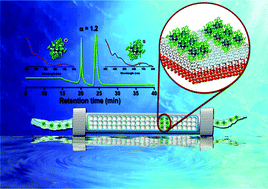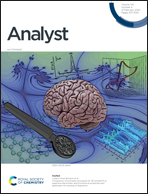Ligand structure and charge state-dependent separation of monolayer protected Au25 clusters using non-aqueous reversed-phase HPLC†
Abstract
The synthesis of atomically precise noble metal clusters using various protocols often results in a mixture of clusters with different cores. Hence, it is important to isolate such clusters in their pure form in terms of composition especially for crystallization. High-performance liquid chromatography (HPLC) is a powerful tool to achieve this. The interaction of ligands with column functionalities determine the extent of separation and their stability under conditions used. We demonstrate a systematic flow rate dependent study of three different aliphatic ligand protected Au25 clusters, with three commercially available alkyl and aryl functionalized reversed-phase HPLC columns, as they represent the variations encountered commonly. Molecular docking simulations were carried out to understand the interactions between the stationary phase and the cluster surface. These investigations enabled the selection of an appropriate column for better separation of structurally different ligand protected clusters. High-resolution separation of anionic and neutral Au25 clusters was acheived with a selectivity (α) of 1.2 by tuning the chromatographic conditions. This study would provide new insights in developing better methods for the efficient separation of monolayer protected clusters.



 Please wait while we load your content...
Please wait while we load your content...